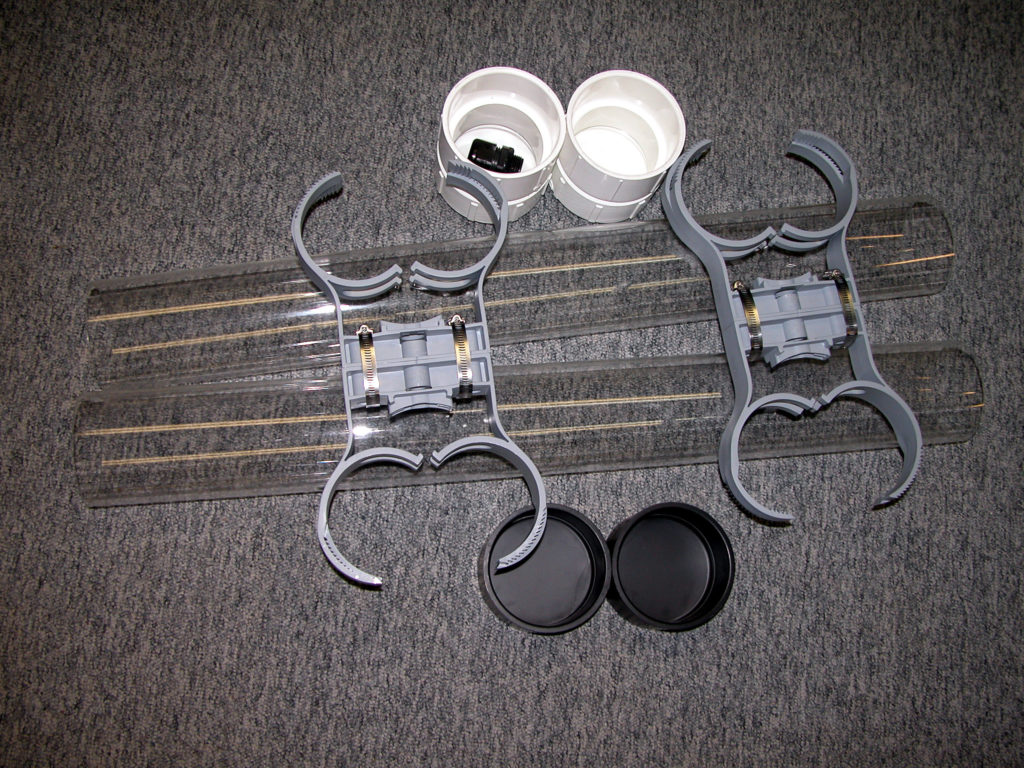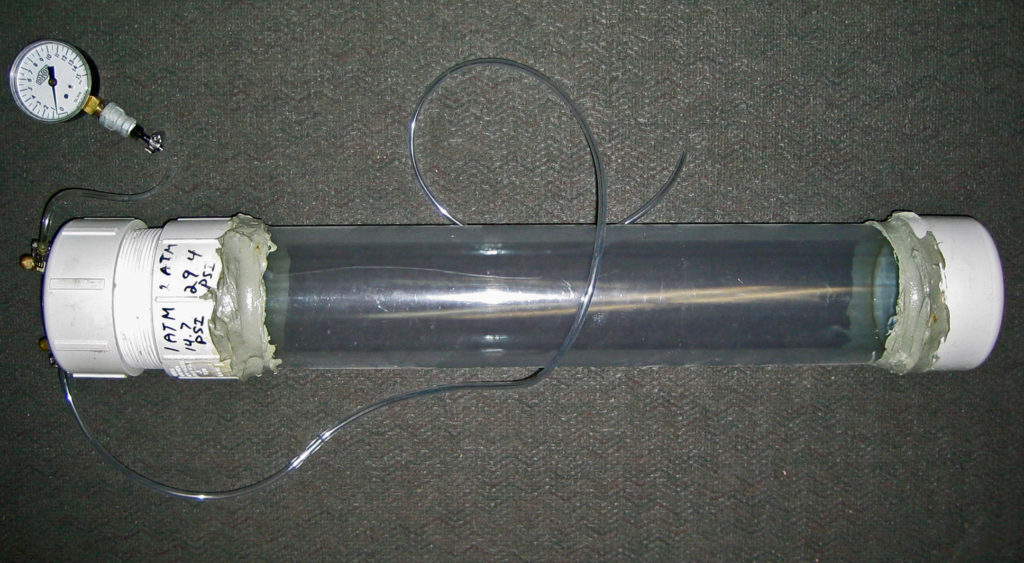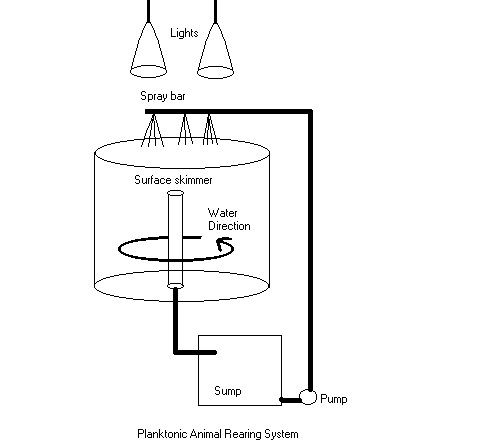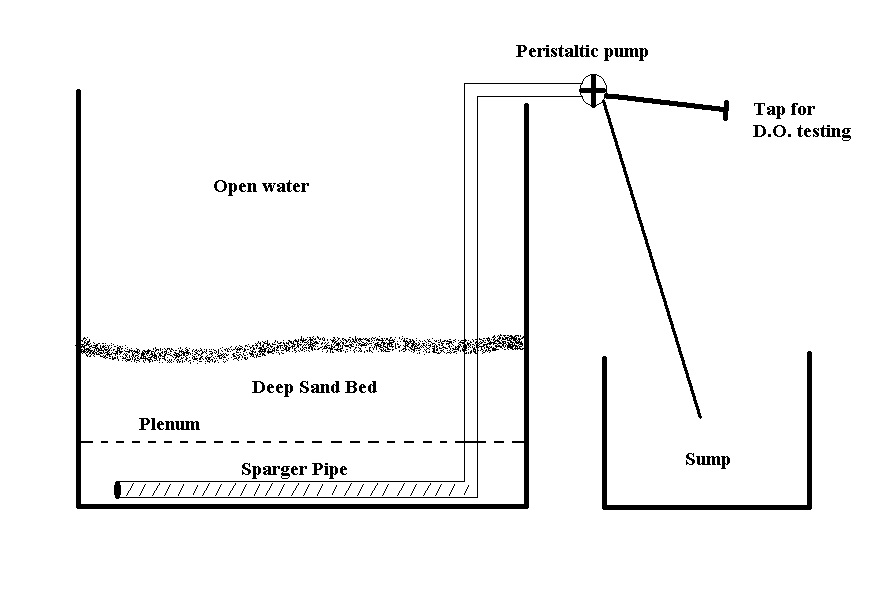by Jay Hemdal
Aquarium Curator
The Toledo Zoo and Aquarium
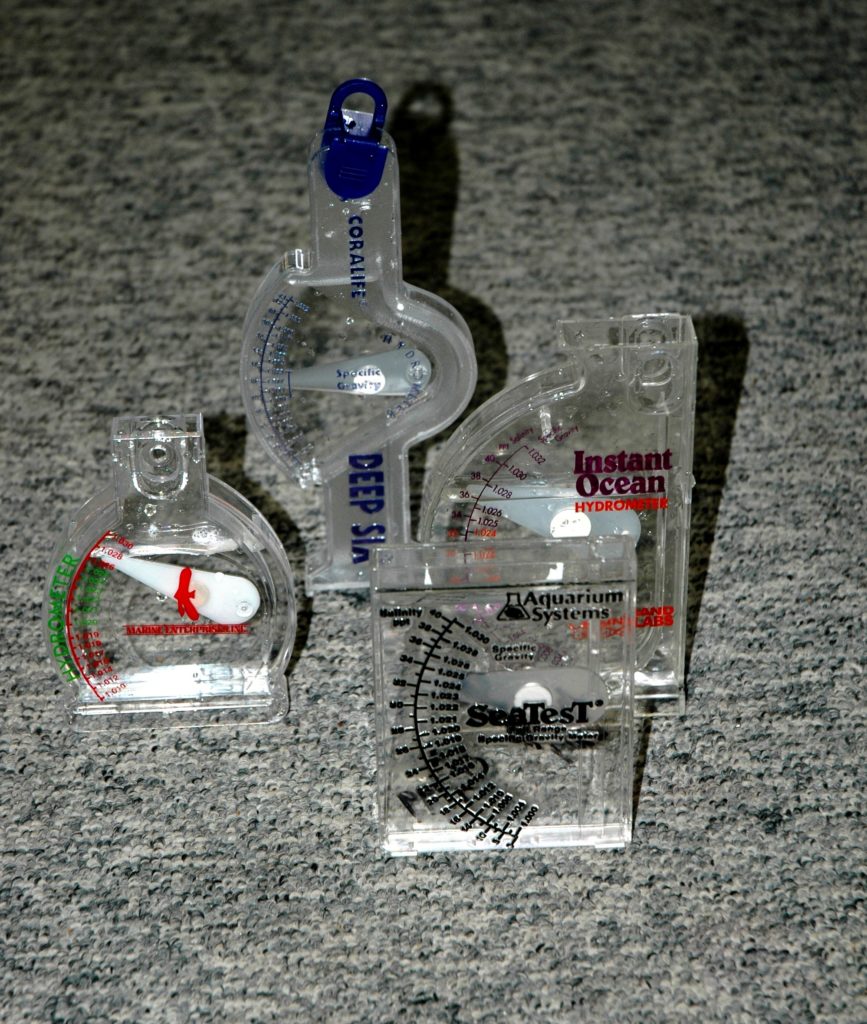
Securing a patent does not always mean that other companies won’t market similar products, as seen with the plethora of plastic hydrometers that are available
Introduction
What are some common dreams people have for their lives? A decent job, solid home life, and good health probably all rank near the top of anyone’s list. Some people also yearn for those “long shots”: winning the lottery, becoming a pro athlete, writing the great American novel, or creating an important invention.
An invention is a new or improved solution to a specific technological problem, and it can be a physical device or a process. While most inventions nowadays are produced by focus groups and committees of engineers, or are just refinements of previous inventions, many ideas in the past were the result of a single person’s vision. Schoolchildren are all taught about famous inventors such as Thomas Alva Edison and George Washington Carver. There was even a reality television show a few years ago on ABC called “American Inventor.”
For some aquarium hobbyists and professionals, creating an aquarium-related invention is a natural combination of such a dream with their hobby or vocation. For all this interest, for most people it ends up being just a pipe dream – acquiring the combination of a great idea, sufficient funding and proper marketing is just too difficult a task. Still, it’s always fun to dream, and who knows, if you’ve always had a “great aquarium idea,” reading this article may help you realize that dream.
An interview with aquarium product inventor: John Farrell Kuhns
1) What aquarium products have you invented?
Many of the products I invented are sold under our distributors’ trademarks. For instance, NovAqua, AmQuel, PolyAqua, and Rid-Ich+; however, we started a few years ago marketing products under our own trademarks (e.g. ULTIMATE, ClorAm-X, and NewPond). The list of products I have invented and/or formulated is quite long. Many years ago, before I invented Professional Water Conditioner, which became known as NovAqua, I invented two water conditioning electrolyte/buffer products: Malawi Salts and Tanganyika Salts.
2) Did you produce these as a free-lance agent, or did you develop them while working for a larger firm?
I invented Professional Water Conditioner shortly after being hired as the research director of General Drug & Chemical Corporation in Kansas City. In 1980, AquaScience Research Group (ARG), the division I formed when hired by GD&C in 1974, eventually bought itself out from GD&C and I became a 1/3 owner of the new corporation. I am president and research director of ARG and continue to develop and formulate new products for the aquarium and herp industry and hobby.
3) Do most of your ideas come as an inspiration or more from perspiration (intensive research)?
Both, but I usually get an inspiration, and these can come from anywhere. The inspiration for ClorAm-X, the ammonia, chlorine and chloramine remover, came to me after re-reading some books on ammonia chemistry. What followed was extensive research.
4) What do you see as the “new frontier” in the aquarium hobby?
I see several challenges to the future of the aquarium future that relate to possible inventions. First, there needs to be a more systematic approach to captive production and reproduction of both marine and freshwater species. Of course, the invention and formulation of new treatments for diseases, especially viral infections, needs attention. Unfortunately, many manufacturers are heading off into the direction of unproven and worthless herbal concoctions. Another avenue that needs more attention is that of aquarist education; we still see the same old, unreliable, and erroneous information being served up to aquarists and pond-keepers. Better-informed and educated hobbyists will result in a demand for better products.
5) Do you have any advice for would-be aquarium inventors?
Yes, get the best general education you can in chemistry, biology, physics, and mathematics, and then get the best education you can in aquariculture, and apply what you know from science and math to what you learn about aquariculture. Read both the historical literature as well as the modern literature and winnow the wheat from the chaff. Identify an existing problem, or better yet identify a developing problem, and work out a way to solve the problem. I was once accused by a prominent figure in the aquarium industry of inventing a solution to a problem that didn’t exist. That “solution” eventually set the standard in the American aquarium industry/hobby for aquarium water conditioners.
What Constitutes an Invention?
An invention is typically a new composition, device, or a process. An invention can be developed based on a pre-existing device or idea, or it can be independently developed and considered to be a breakthrough. An aquarium invention that is novel enough and not obvious to others skilled in the field may be unique enough to obtain the legal protection of a patent.
The creative process is paramount. A good idea must be formulated, and then the process needs to be refined by trial and error, and modeling. Simply refining or changing the work done by others is usually not sufficiently unique to call the result an invention. Innovation is the process of applying new ideas, or old ideas in new ways. Using a Rubbermaid™ trash can as an external bio-filter, while cost-effective and very innovative, is not a new invention. The attribute of innovation has always been a core attribute to home aquarists, but by itself is not always inventiveness.
Types of Inventions
There are obviously a wide variety of ideas for inventions that people come up with, some more marketable than others. Unique products are what people usually think of when they think of an invention. These are products that fill a need for which there is no existing product available. With so many inventive people out there thinking of new ideas, developing a truly unique product is actually a very rare occurrence. In some cases, the product may be unique, but there is no true need for it in the aquarium market. Knowing this, people may work at developing some sort of improvement on an existing product – if you build a better mousetrap, people will beat a path to your door.
For aquarium inventors, extrapolating an idea from a related industry may prove to be very successful; various forms of “bio-media” for use in aquarium filtration all have their roots in the wastewater treatment industry. Beware of over-extrapolation, as not all ideas successfully make the transition into good aquarium ideas. People have also developed ideas for various fish disease treatments or chemical additives for aquarium water. Demonstrating actual effectiveness of some of these products is important; just like in the Wild West, there are snake oil salesman hawking their products to aquarists to this very day. Although not inventions in the strict sense of the term, there are also products that can be developed to help home aquarists such as computer software, problem solving keys, and informational web sites.
“Inventing” a new living aquarium inhabitant is also a possibility. Color varieties of various fish have been developed through careful selective breeding. Although it is difficult to patent a hybrid or color variety, it is possible to trademark the name for one of these creatures. The current craze of giving fanciful names to color varieties of corals is just a fad; there is no direct development of a new strain, just marketing of corals that already have unique attributes when taken from the wild. In fact, it is doubtful that any genetic changes at all would be possible in an organism produced by direct fragments (cloning, if you will) of the parent colony. Many corals are “phenotypically plastic”–that is, they change the form they take, their size, and their color, all in response to being kept under different environmental conditions. Hobbyists taking advantage of this plasticity are not actually creating a new form, as the coral will change its morphology again when moved to an aquarium with different conditions.
In addition, it may be possible to patent the procedure used to produce a new type of animal, as in the case of the GloFish® that is a genetically modified (GM) zebra danio. There are also now some GM cichlids, angelfish, and the like. Not all people see this as an improvement over the wild genotype; in fact, the sale of GM animals may be controlled by laws in some countries, including Great Britain (where their sale is apparently illegal). It apparently is not possible to patent animals derived from selective breeding, but it may be possible to trademark the names for such animals.
Early, Successful Aquarium Inventions
Looking back on previous aquarium inventions may be helpful, both in terms of what to do and what not to do. The undergravel filter was a revolutionary device in the 1950’s. The first one that I’m familiar with was a series of slotted green tubes placed under the gravel and operated by a simple airlift. These worked fine, but evidently, the manufacturer did not secure appropriate patents, as in 1960 Allan Willinger patented a plate filter referred to as the “Miracle Filter.” A similar trend was seen with thermostatic heaters, diaphragm air pumps, all-glass aquariums, and protein skimmers. None of the original manufacturers of those products were able to compete with similar products that were subsequently produced by other companies.
Some Starter Ideas
Although I’ve spent a fair amount of time dreaming up inventions of my own, I really don’t have the time to focus on developing any of them myself. I prefer to write down my ideas as magazine articles and in books, and let others take it from there. In 1993, I described a method to control various pest anemones and algae in aquariums using a slurry of calcium hydroxide. This idea was modified and has been marketed by at least one company. In my 2006 book, Advanced Marine Aquarium Techniques, I discuss two other potential ideas. One is a titanium contact switch connected to the pump running a protein skimmer to prevent accidental overflows. The other idea I describe in the book is a prototype for a pressure chamber used to resolve popeye (Exophthalmia) in fishes.
Currently, there is a flurry of activity looking at applying Light Emitting Diodes (LEDs) to aquariums, in particular as low-energy reef aquarium lighting. I think there is also the possibility of developing mini-aquarium lighting fixtures using MR16 bi-pin 12 volt halogen bulbs such as the 5300k Ushio lamp.
While writing on topics for the aquarium trade is not an “invention” in the strictest sense of the word, it does have many of the same attributes: something innovative that will help others with their aquariums. Rather than a patent, written material is protected by a copyright. Rumor has it that Herbert Axelrod bought a home using the proceeds of his first aquarium book. Windfalls like that are mostly non-existent nowadays, but a prolific aquarium writer can at least expect to pay for the down payment on an older used car with their proceeds from a book!
Legal Aspects
For all inventions, securing a patent becomes a vital part of the process. A patent is a set of exclusive rights granted by a government to an inventor for a limited period of time. In order to ensure that the patent is unique, there must be a public disclosure of the details of the invention.
The patent procedure varies widely between countries, and due to the vast legal ramifications, it is always best to involve a patent attorney at some point in the process. A patent does not give the inventor the right to produce and market the invention, but rather it protects the inventor from others who may try to develop and market the same product. Complicated devices or processes may be covered by multiple patents. Taking into consideration the cost of the patent application, maintenance fees, and the potential legal costs to defend a patent, the cost of this process can run in the tens of thousands of dollars.
Alternatives to patents include copyrighting an intellectual property, keeping the device or process protected as a “trade secret” or by producing a defensive publication. The latter is a published outline of the method used to create the invention. Then, at a later date, should you wish to pursue a patent, the preexistence of your idea may help demonstrate that you indeed were the originator of the idea.
One very important aspect of the invention process is that of liability. With inventiveness comes the responsibility to develop products that can be safely used by consumers. A recent issue comes to mind: a brand of aquarium heater failed to initiate a voluntary recall by the manufacturer, but not until many consumers had problems with the defective product.
Various governmental agencies have become increasingly concerned about pet stores selling potentially dangerous chemicals to their customers, and the laws governing their manufacture and sale are likely to increase dramatically in the near future.
Marketing
Even great inventions will languish if they are not marketed properly. Self-promotion is one course of action, but it will certainly prove costly and entails the greatest amount of risk for the inventor. You might be able to sell your invention to another company to develop and market, but there is always a risk of being shut out through legal wrangling; and even if the deal does go through, your financial gain will be correspondingly less, as the other company is assuming all of the risk. Special care must be taken if you develop a product while an employee of another company. A lawyer will be required to ensure that your invention is indeed your own, and not owned by the company you work for.
There are a variety of companies that offer to review your invention and help you with patenting and marketing the product. Taking a lesson from vanity book publishers and talent scouts, if any of these firms ask for you to pay for their services up front, assume that this is the way they make their profit, and find another outlet for your invention.
In some cases, a blended marketing scheme may work; you develop your invention, market it on a small scale to prove its marketplace acceptance, and then take those results and develop a sales plan to sell the product rights to a larger company. I did this with some aquarium software I developed in the 1990’s – I could show the prospective buyer my past sales, and that made the product more desirable to them.
Conclusion
As with any novel venture, promoting an aquarium invention has a financial risk associated with it that is proportional to the amount of time and funds invested in the project. People have invested their life savings into developing a product that never pans out. If you are accepting the risk of such a venture by yourself (and not as an employee of a company), try to mitigate that risk by starting to market your new invention slowly. Don’t invest more than you are willing to lose (as you would through other similar risky ventures, such as the stock market).
References
Hemdal, J.F. 2006. Advanced Marine Aquarium Techniques. 352pp. TFH publications, Neptune City, New Jersey
Kuhns, J.F. 2006 personal communication.

